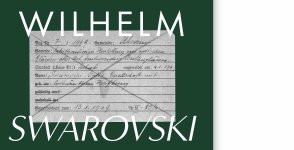John A Roberts
Well-known member

The company name Swarovski Optik KG was registered 70 years ago in April 1949
As part of the anniversary, SO has recently posted a video about the company at: https://aa.swarovskioptik.com/hunti...KI_OPTIK_Figures_describing_a_success_story_H
The 2 minute video is in German with English sub-titles, and the main points are:
PRODUCTION
Production is at the 40,000 sq meter (430,000 sq feet) Absam site, which includes a 10,000 sq meter production area
It uses 125 machines, 90 of which are CNC (Computer Numerical Controlled)
The machines have a 10 years service life after which they are replaced
Manufacturing is linked and monitored by a digitised MES (Manufacturing Executive System)
PARTS
For the product range, SO manufactures around 9,500 different parts, which places a huge stress on the timely provision of parts when needed on the production line
FINANCIAL INVESTMENT
Currently a major €28.7 million investment in production capability is underway
EMPLOYEES
There are 970 world wide, 770 of which are at Absam
For the production personnel, there is an apprenticeship programme which starts as young as the age of 14
Apprentices are trained in one of three qualifications: Machining Technology; Optics, or; Automation and Process Control
The last was introduced in 2018 (and presumedly reflects the increasing importance of digital processes)
The overall message is one of the use of modernisation and efficiency to ensure quality
- - - -
OTHER CURRENT CORPORATE INFORMATION
There is of course additional information on SO’s website:
A) Various information is linked to the ‘About Us’ option in the bar at the top of the page: https://aa.swarovskioptik.com/birding?CategoryName=21
B) A variety of detailed information is contained in the 136 page 2016 Sustainability Report. For some examples and a direct link, see here: https://aa.swarovskioptik.com/birding?CategoryName=21
And SO also provides optical design and production services to other businesses under the SWAROTEC brand, see the seperate website here: http://www.swarotec.com/en
RECENT VISITS TO THE ABSAM FACTORY
I recently came across two reports of 2018 visits to the Absam factory
They expand on some of the information in the video and provide additional images of the factory
The first report includes reference to the concept of ‘Swarovskigeist' - the attitude that defines the company culture
Both also include images of a factory cutaway EL SV x42 model
https://optics-info.com/swarovski-factory-tour-by-optics-trade/
https://blog.parkcameras.com/2018/05/exploring-swarovski-optiks-binoculars-spotting-scopes.html
John
As part of the anniversary, SO has recently posted a video about the company at: https://aa.swarovskioptik.com/hunti...KI_OPTIK_Figures_describing_a_success_story_H
The 2 minute video is in German with English sub-titles, and the main points are:
PRODUCTION
Production is at the 40,000 sq meter (430,000 sq feet) Absam site, which includes a 10,000 sq meter production area
It uses 125 machines, 90 of which are CNC (Computer Numerical Controlled)
The machines have a 10 years service life after which they are replaced
Manufacturing is linked and monitored by a digitised MES (Manufacturing Executive System)
PARTS
For the product range, SO manufactures around 9,500 different parts, which places a huge stress on the timely provision of parts when needed on the production line
FINANCIAL INVESTMENT
Currently a major €28.7 million investment in production capability is underway
EMPLOYEES
There are 970 world wide, 770 of which are at Absam
For the production personnel, there is an apprenticeship programme which starts as young as the age of 14
Apprentices are trained in one of three qualifications: Machining Technology; Optics, or; Automation and Process Control
The last was introduced in 2018 (and presumedly reflects the increasing importance of digital processes)
The overall message is one of the use of modernisation and efficiency to ensure quality
- - - -
OTHER CURRENT CORPORATE INFORMATION
There is of course additional information on SO’s website:
A) Various information is linked to the ‘About Us’ option in the bar at the top of the page: https://aa.swarovskioptik.com/birding?CategoryName=21
B) A variety of detailed information is contained in the 136 page 2016 Sustainability Report. For some examples and a direct link, see here: https://aa.swarovskioptik.com/birding?CategoryName=21
And SO also provides optical design and production services to other businesses under the SWAROTEC brand, see the seperate website here: http://www.swarotec.com/en
RECENT VISITS TO THE ABSAM FACTORY
I recently came across two reports of 2018 visits to the Absam factory
They expand on some of the information in the video and provide additional images of the factory
The first report includes reference to the concept of ‘Swarovskigeist' - the attitude that defines the company culture
Both also include images of a factory cutaway EL SV x42 model
https://optics-info.com/swarovski-factory-tour-by-optics-trade/
https://blog.parkcameras.com/2018/05/exploring-swarovski-optiks-binoculars-spotting-scopes.html
John








